Soil sterilization (Method of soil sterilization with sun heat) – Soil disinfection and refresh
This time, refresh garden soil. We will use the sun’s heat to disinfect the soil. (Best way to sterilize soil.) The spring and summer vegetables are finished growing, and there is still some time before we start growing fall and winter vegetables. So, let’s use this time to get rid of diseases, pests, and weed seeds.

Methods of soil sterilization by sun, spread 2 liters (2 qt) of cow manure and 100g (3.5 oz) of canola cake on a 60cm by 120cm (2 ft by 4 ft) bed, and mix well.
We use fertilizer to increase the microorganisms in the soil. When the microorganisms increase, they use up the oxygen in the soil, which can cause pests to die from lack of oxygen.
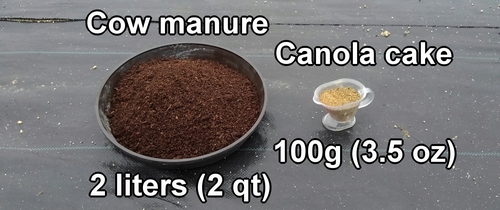

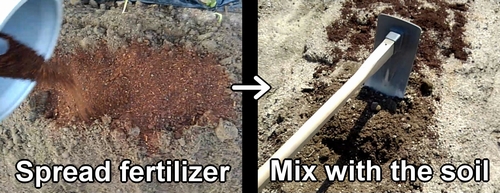
After mixing the soil and fertilizer, shape the bed and water it with 3 cans of water. Watering with a lot of water helps the heat spread better, reaching deep into the soil. This means the soil gets hotter and the disinfection effect is improved.
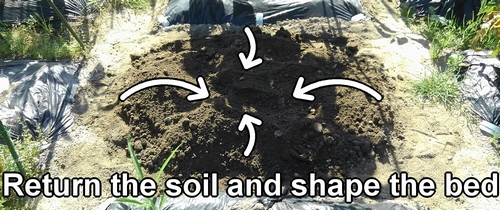

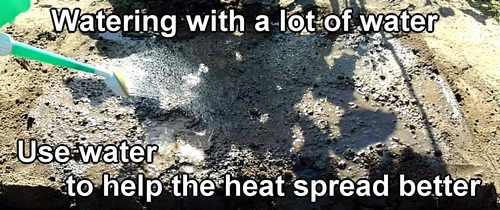
Finally, put on a transparent plastic mulch, and the soil disinfection (soil sterilization) is done. We use a transparent mulch because it makes the temperature higher. (It’s the same idea as a greenhouse. Transparent plastic lets more sunlight in, which makes it warmer inside.)
Solar heat disinfection can be very effective if it lasts for about 3 weeks to 1 month. The large amount of water spread on the bed and the transparent mulch make the soil very hot and steamy, killing disease germs, weed seeds, and pests.
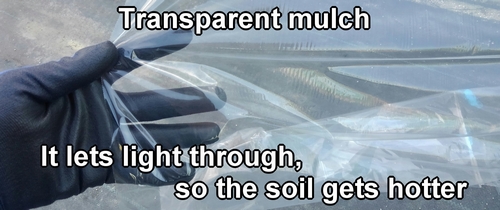

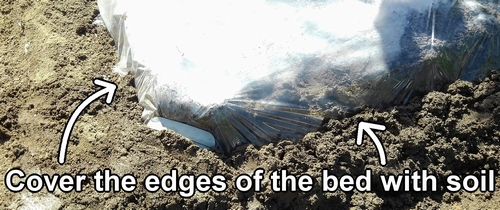


Sterilize soil with sun is an eco-friendly way to sterilize soil using natural power. (Best way to sterilize soil.)
Related information on soil sterilization with sun (Frequently Asked Questions for soil sterilization methods)

Soil solar sterilization (heat soil sterilization) is about killing pests and disease-causing germs with heat, right? But if we use heat to sterilize, won’t it kill not only bad germs but also useful microbes?

Yes, that’s right. Solar sterilization of the soil doesn’t “filter out” only the bad germs and leave the good ones. It’s more like a complete reset. (It kills all germs, both good and bad.)

So it means we sterilize the soil, reset it, and start fresh when growing the next autumn and winter vegetables?

Exactly.

Does solar soil sterilization make good microbes increase?

No, it doesn’t work like that. Let me explain more about soil sterilization. For example, taro. Taro is grown in a 5-year cycle (it needs 4 years of not being grown).

That’s quite a long time.

The reason the cycle is so long is because of germs in the soil.

So when we grow the same crop over and over, the germs that cause problems stay in the soil for a long time, so we need to wait longer between growing?

Yes, exactly. During the time when the crop is not grown, there’s a battle between good and bad germs, and this resets the soil.

I see.

For example, with taro, this 5-year cycle can be shortened to about 1 month by using soil solar sterilization.

It’s not just about germs, but thinking about pests too, sterilizing the soil with solar heat makes the risk lower, right?

That’s right. In home gardening, I think people want to plant the next crop as soon as they finish growing one vegetable.

Yes, when there’s an empty bed, I feel like planting something right away.

But instead of doing that, it’s better to add fertilizer, dig the soil, and let air in (rest the soil and increase good germs). That’s better for the soil in your garden.

By giving the soil a rest period (for soil sterilization), the vegetables we plant after that will grow better, right?

Yes, the vegetable plants will become stronger. When the plants are stronger, you can expect a bigger harvest, and they will be more resistant to diseases and pests.

Wow, I see.

When the plants are stronger and more resistant to diseases and pests, it means you will have less work to take care of them. It creates a good cycle.

Less work in caring for the plants sounds great.

When the vegetable plants are healthy and grow well on their own, we just need to watch them grow. The timing for caring for vegetables is different depending on the type, so I can’t say exactly when.

So the timing of care (taking care of the plants at the right time) is important.

Yes, that way you’ll have less work and the plants will grow well.

I understand. Thank you very much.
Following is the video for how-to. English subtitles are available.



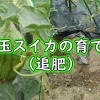
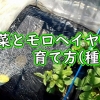






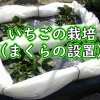
ディスカッション
コメント一覧
まだ、コメントがありません